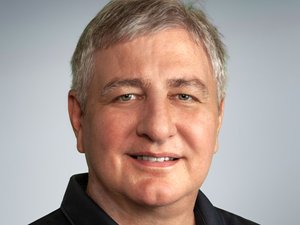In late February, I was in my first month covering the D.C. tech beat. Somewhere between writing to meet a deadline, arranging interviews and simply learning about the scene, I stood at the door step of iStrategy Labs’ (ISL) new, warehouse-sized office, designed by Wingate Hughes, for a pre-scheduled interview.
At the time, the unique grandeur, for lack of a better term, of covering the startup movement was not apparent. I felt just the same as any other young, east coast business reporter, still searching for what made the scene culturally relevant and different from an IBM press release. Roughly 3,000 miles from the startup mecca otherwise known as Silicon Valley, and I was naively looking for something that resembled its utopian, Disney Land-like atmosphere.
Walking into ISL that February night made me realize the importance and influence that office design holds in relation to a person's mental state.
As I entered the building, I escaped the otherwise blank cold to find what appeared to be a startup-esque haven—complete with an open office layout, concrete floors, unfinished ceilings, glass-enclosed conference rooms, sleeping pods, meditation rooms, and techies playing Xbox beside a modern kitchen laden in marble and stainless steel.
It was, looking back on it now, perhaps the first time that I felt more like a startup reporter and less like a blue suit business journo. Since that day, I have stepped into countless interviews and companies throughout the Greater Washington, D.C. area to find that the offices they call home carry similar themes. Though the companies, executives and technologies may be different, defining company culture remains important to all of them.
Startup office design appears to be a catalyst, locally, to help foster a positive work environment as well. Earlier this year, The Washington Post published its yearly workplace rankings report and the D.C. tech scene performed especially well.

In most cases, when people talk about the rise of the D.C. tech scene you’ll hear a series of talking points that include private investment trends, hot industry sectors and the prominence of aging tech giants. Fair enough. But the culture behind the scene, and being able to define that underlying, genuine attitude, is also critical because it encourages a native and original identity.
The composers
From a corner office overlooking McPherson Square, a small, boutique architecture and design firm by the name of Wingate Hughes is carving D.C. tech’s image with a creative, scotch-washed approach courtesy of eccentric co-founders/principals Gavin Daniels and Gavin Bowie. While flying under the radar, the 18-person firm is responsible for the design of numerous local startup habitats, including Nvite, 1776, iStrategy Labs, the NVCA and LivingSocial.
Bowie and Daniels ("The Gavins," as they are known around the office) met in September 2008 at Real Estate Group, a monthly networking event comprised of 40-and-unders in the local industry. In the winter of 2009, both were laid off at their firms due to a lagging economy in the architecture and design markets. Bowie started an architecture firm as a sole proprietorship and quickly decided to take a partner. Bowie proposed the partnership to Daniels, and by April the pair founded Wingate Hughes Architects PLLC—a combination of their middle names—in the top floor of Bowie’s house.

“When we started, we had six months to make money or go sell cars or go flip burgers,” Daniels told DC Inno, “we found that we really understood and could relate to clients in this community; you know, that this isn’t just a hobby, it isn’t just a cross your fingers and you’ll make it attempt. This is a work your ass off and take yourself seriously and do something that no one has done before environment—to think about something the way that no one else has before, to do things differently. That’s what we try do here as well. And we really love working with people who feel the same way.”
From day one, the two made their plan to focus on “relationship-driven designs” and to specialize in corporate interiors. The thematic belief, driving the Gavin-to-Gavin venture, was that office design was important because it could spark creativity and motivation while reflecting the personality and goals of a business, Wingate Hughes director of marketing and communications Meghan Fuentes told DC Inno.
Today
Wingate Hughes currently has 58 active clients with ongoing projects, locally, many of whom are tech startups.
Over the last 3 years, the firm has completed more than 80 tech office redesigns. Importantly, Daniels tells DC Inno that Wingate Hughes strives to become the governing author responsible for renovating the D.C. tech scene—dominating the market by executing one HGTV-like office makeover after another.
Business is booming and, for Wingate Hughes, it looks poised to grow parallel with the maturation of the area’s tech economy. Client and employee growth has approximately doubled since January 2014.
“We’re getting more and more referrals from our clients and friends in the space than ever before. And that’s definitely becoming a larger aspect of our business—the referrals,” Daniels said as he reflected on the company’s popularity among tech cos.
Wingate Hughes has clients that own spaces as small as 2,000-square-feet to larger occupancy clients just under 100,000-square-feet. The size of the average D.C. client’s office, Bowie told DC Inno, is between 7,000 and 8,000-square-feet.
"The traditional AOLs and larger giants, that’s all fine and good, but there was no one saying I believe in you now, when you’re just 10 people"
“It’s an underserved community [the local startup scene], by architects, for sure. We were one of the first architecture firms to target it here in D.C. and realize that there was nobody who was really pursuing it. The traditional AOLs and larger giants, that’s all fine and good, but there was no one saying I believe in you now, when you’re just 10 people—saying I can do something cool with your space and I realize you have limited investor money, where you can’t spend like crazy, But you still need something cool,” Daniels explained.
Operations
Rather than being responsible for the physical/actual construction work that’s occurring in a space, Wingate Hughes works with startup founders, entrepreneurs and other clients to build cohesive office designs that mirror elements of their specific company’s personalities and mission. When a client contracts the firm, they are hiring architects that will plan a “design blueprint.”
Separately, the client will also sign other contracts with a construction company and potentially with their individual landlord if they do not own the property. During the development process, Wingate Hughes will actively consult with the construction crew and client to see the project runs smoothly.
The firm will also, in some cases, locate and provide the materials necessary for specific design elements/accents to complete a plan. In a previous job, that Daniels recounted with pride, this meant forging a relationship with a Tennessee-based whiskey distillery that would sell aged barrels for recycled purposes. The firm secured an order of these whiskey-washed barrels, and brought the materials into D.C. to be stripped and reapplied as wood panelling.
Design D.C.
To ask an artist to describe their style is tantamount to asking a programmer what his favorite coding language is. To some degree, it’s an arbitrary but almost obligatory question when you’re getting to know them in a professional setting. The Gavins responded to my question as such, saying “we practice a contemporary approach to design; demanding attention to detail and precision. For every client we push beyond conventional standards and trends, designing a workplace grounded in reality yet custom fit to each client’s unique culture and goals.”
D.C. is about the concrete, the colorful neighborhoods, the energy, and the diverse people
With that being said, aligning local office design with the cityscape—and incorporating natural highlights that speak to the District’s culture and history—is also an underlying theme in Wingate Hughes’ work. This authentic, D.C.ist-style is especially apparent in booking.com’s L Street office, where the firm brought in a local artist to create wall murals and incorporated elements from the D.C. Metro system because the client was interested in transportation metaphors.
Bowie said that he believe Wingate Hughes sees “the real D.C” because his team has lived in the area for a long time. “We appreciate the sounds, feel, and style of the city. We know that D.C. is more than the White House and tourists walking the Mall. D.C. is about the concrete, the colorful neighborhoods, the energy, and the diverse people. We talk to all of our clients and decide the right way to pull D.C. through the design.”
As a company whose business revolves around the vision and dreams of clients unfamiliar with the design process, the biggest challenge lays in translating their ideas into beautiful crafted and convenient workplaces. Getting to honestly know and converse with a client and their team, Bowie and Daniel said, is vital in transforming a rough sketch into a blank space you’ll call your professional home.
RDD
Communication is key.
When you see that moment, where you get that little gasp, that little tiny thing where they see you get it, that’s huge
Bowie explained that the firm’s ideology comes from a three word mantra, “relationship-driven design.”
Wingate Hughes prepares its clients by helping them set their goals from the start; “we are upfront and don’t sugarcoat the process of leasing, designing, and building an office space. We know it is stressful and can be scary, but we’ve found our clients prefer a firm that is direct,” Bowie said.
Finding the right medium to have these intimate yet comfortable conversations about a client’s vision—outside the confines of architect terminology—is undoubtedly the first step, but it’s also the most important.
Daniels, who seemed to pause in thought before responding to my final question, described the architect-client relationship by saying, “it’s about creating a space that is them, that looks like them. To do that you have to allow a client to speak on their terms, to use their words, their vocabulary, their adjectives. And then you get to know them a little better—then draw some and show them—then go back to them and get to know them more—then draw some—and all the while, realize that you have a huge responsibility. It’s their brand, it’s their image. When you see that moment—similar to watching a movie with someone—where you get that little gasp, that little tiny thing where they see you get it, that’s huge.”




